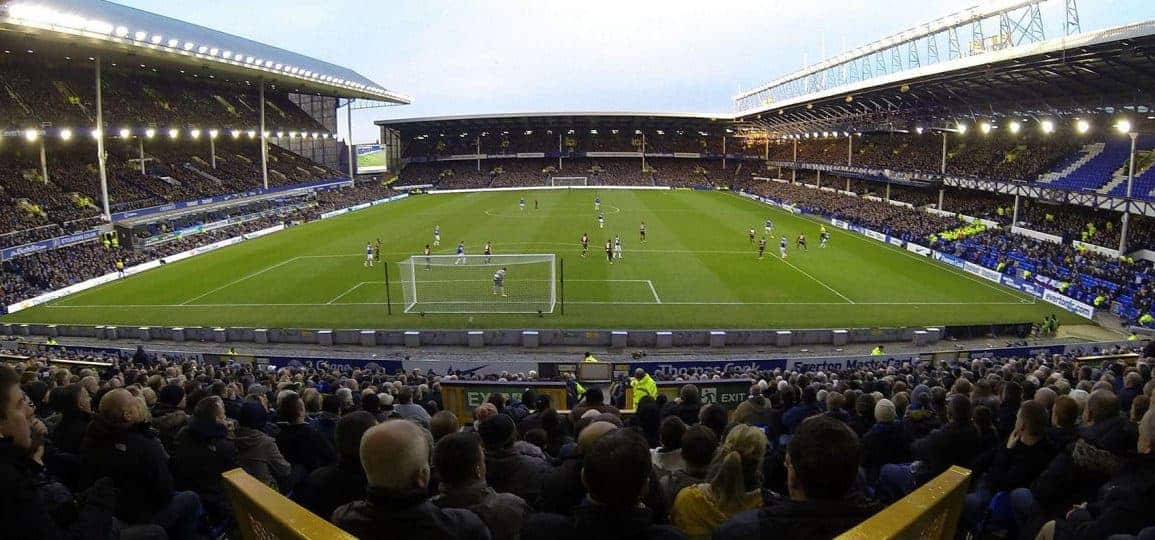One of the fears for the bulk of fans when moving to a new stadium is the threat and usually the reality of increases in ticket prices.
This may seem particularly relevant in the case of Everton, partially because of the economic demographic of the fan base, but also as you will see below the comparison of match day revenues generated per spectator per season.
So, I started by looking at the average amount of match day income each of the peers’ group generate per fan per season (based on match day income/average attendance – 2014/15 season).
| Club | Average matchday income per spectator (2014/15) |
| Chelsea | £1709 |
| Arsenal | £1667 |
| Liverpool | £1276 |
| Manchester United | £1155 |
| Tottenham Hotspur | £1147 |
| Manchester City | £947 |
| Everton | £495 |
On the face of it quite shocking, and immediately alarm bells might ring that with such a gap to be made up, significant price increases may be necessary.
Now there’s a huge number of contributory factors for the above including but not limited to the currently small executive/premium seating capacity, high percentage of season tickets v overall capacity, season ticket discount schemes and numbers of concessionary spectators.
Everton have done a good job over recent years of making Goodison Park as much an affordable experience as they realistically can, especially for our younger and more senior season ticket holders. However the cost to this policy is obviously in the revenues generated for the club.
I believe it’s extremely important though that we continue to attract children and young adults to the game (to refresh the fan base for future years) but also, especially given our history and our standing in the community, make the game affordable to the more senior spectators, many on fixed incomes who frankly could not afford price increases of any form.
Whilst we need to look for new supporters and regular visitors to fill the stadium each week, I think retention of our existing support is vital, and right – especially if we can enter the winner’s circle once more.
So how can the income per spectator be improved without making the match day experience so unaffordable as to take the club out of the financial reach of current fans?
- Large increase in executive and premium seating
- Reduction in % of season ticket holders v stadium capacity
- Attracting more “walk up” and non-regular fans to the stadium
I’ve taken a leap into the dark and made the following assumptions:
- We build a 52,500 seat stadium with 5,000 executive/premium seats and 20 additional boxes
- Season ticket prices remain the same, executive/premium seats cost an average of £200 per game, other tickets average £50 per game and executive boxes cost £75,000 per season – all inclusive of VAT
- The model uses the existing ratio of junior, under 22’s and seniors amongst our season ticket.
- Assumes we would sell out each game and have 35,000 season ticket holders.
- Assumes 2,500 away supporters at each game paying £30 a head.
- 10,000 non season ticketholders and “turn up” supporters at each game.
- No consideration of cup games/European games for ease of calculation
- No consideration of merchandising income
The above model would produce income as follows:
| Income generated ex VAT | |
| Season ticket holders | £10,475,000 |
| Executive boxes | £1,250,000 |
| Exec/premium seating | £15,833,000 |
| Away supporters | £1,197,000 |
| Non season ticket sales | £7,917,000 |
| Total | £36,672,000 |
From the above, the average match day income per spectator rises from £495 to £698, still a long way behind our peer group but achieved without an increase in cost to the majority of our core support.
How does the income stack up against the costs of building and financing a stadium and what does that mean for cash flow going forward?
I’m going to look at debt levels of £100 and £150 million repayable over 30 years at 6%, and the resulting cash flow. For the purposes of this article the cost of the stadium and the capital contribution are put to one side. The assumption being this is met from a capital raise in the form of equity by Moshiri.
| Amount of debt | Annual cost | Cash flow (revenues = £36.67m approx) |
| £100 million | £7,200,000 | £29.47 million |
| £150 million | £10,800,000 | £25.87 million |
| £200 million | £14,400,000 | £22.27 million |
What is clear from the above is that a new stadium can be cash generative, yet cost no more for the core support. However it is conditional on two main factors.
Firstly we have to sell out each game to achieve these figures. How is that achieved? Well with an attractive team, consistently in the hunt for trophies and competing in Europe – requires investment in the team and the right manager, something we believe is being addressed by Moshiri at present.
Secondly and most importantly it requires a sales, marketing and events team that can sell 20 executive boxes and (in the examples above) sell 5,000 premium seats for every home match. Is that possible? Well an iconic stadium, a high profile manager and potentially successful team will go along way to achieving that, but ultimately it’s down to the complete experience and the effectiveness of marketing it.
So to conclude – we can it appears, have our cake and eat it. It’s possible to build a stadium – and a very good stadium at that, even when partially funded by debt, and produce positive cash flow to assist the club’s activities on the field without causing price increases for our core support.
I hope that fan groups take note, and the board take the same view


